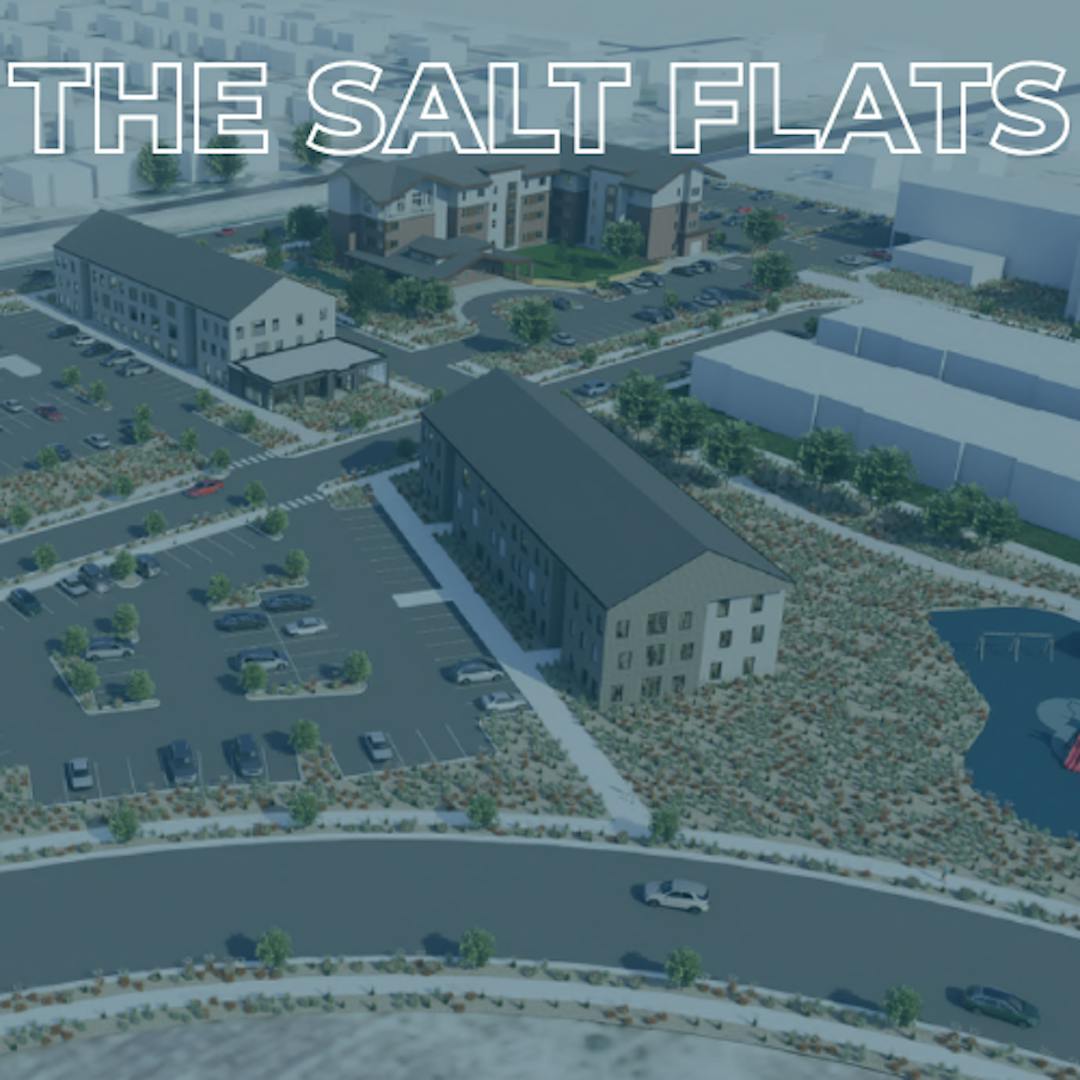Salt Flats Project

This project page acts as a platform for community members to be informed and learn about the upcoming next steps for the development of the Salt Flats property.
Project Overview
The Salt Flats Project is more than just housing — it’s about building the future of Grand Junction. This 21.78-acre site, once underutilized, is being transformed into a neighborhood designed to meet the community housing needs.
At its heart, the Salt Flats Project will deliver between 324 and 550 new homes, blending affordable options with attainable and market-rate homes in both rental and homeownership opportunities for local families. This mix is intentional: by combining public investment with private development, the project creates stability for families and seniors while also encouraging new opportunities for local builders, businesses, and investors.
Why It Matters
In recent years, high interest rates and rising construction costs have increased housing costs across the country. Grand Junction has felt these impacts, leaving fewer options for local renters and buyers. The City is removing barriers to development — investing in the infrastructure, planning, and groundwork that make it easier for the private market to deliver homes. This means developers can focus on building high-quality housing that serves a wide range of people in our community.
A Neighborhood for Everyone
Salt Flats is designed to be a place where neighbors can thrive. With plans for a neighborhood park, open space, and its location near bus stops, jobs, and services means residents this development isn’t just about homes — it’s about creating a community. Residents will have easy access to the things that make life in Grand Junction more affordable.
Community-Driven Growth
This project represents a once-in-a-generation chance to guide growth in a way that benefits everyone. By combining affordable housing with private development, Salt Flats strengthens our economy, supports local businesses, and ensures that Grand Junction remains a place where teachers, nurses, first responders, service workers, and young families can live alongside retirees and professionals.
Project History
To help meet Grand Junction’s growing housing needs, the City adopted 13 Housing Strategies, which were reaffirmed and expanded in the 2024 Housing Strategy Update. One key strategy was to use City-owned land, or purchase new land, to support affordable housing development.
At first, this was difficult because the City Charter only allowed land leases of up to 25 years. Affordable housing funding sources typically require much longer leases — 30 to 99 years — to secure financing. To solve this, the City placed Ballot Measure 2B on the Fall 2023 ballot. With strong voter support, the Charter was amended to allow leases of up to 99 years specifically for affordable and attainable housing. This change removed a major barrier and opened the door for projects like the Salt Flats.
Another housing strategy focused on reducing infrastructure costs, which are one of the biggest barriers to building affordable housing. The Salt Flats property — a 21.78-acre site within a larger 33-acre parcel — had long been vacant. It was owned by En-Sim QOF, LLC, a local candy manufacturer, which had planned to keep part of the property for warehouse and office expansion. But the high cost of infrastructure made private development of the northern portion impossible, creating a unique opportunity for City partnership.
In November 2023, the City applied for a Proposition 123 Land Banking Grant through the Colorado Housing and Finance Authority (CHFA) for $2.2 million, paired with a $1 million City match. The grant was awarded in January 2024, allowing the City to move forward with acquisition. A Letter of Intent with En-Sim was signed in April, and the property subdivision was completed later that year.
To support infrastructure needs, the City also applied for the More Housing Now Grant in August 2024, requesting $2 million with an $800,000 City match. That grant was awarded in November 2024, and the purchase of the Salt Flats site was finalized in January 2025.
Shortly after acquisition, the Grand Junction Housing Authority (GJHA) requested that a portion of the site be set aside for a project for them to find a partner. The City honored this request, reserving up to 2.91 acres in the northwest corner. Meanwhile, the City issued a Request for Proposals (RFP) for the rest of the property. By March 2025, 13 proposals were submitted, with developer interviews taking place in April. From this process, four development teams were selected, including one that will serve as the site’s Master Planner.
Detailed information on the selected developers, project timelines, and proposed housing units can be found in the following pages.
Ask a Question
There are lots of questions about the Salt Flats project circulating in the community. Drop your questions here, and we’ll do our best to answer and bring clarity. If we don’t have the answer right away, we’ll be upfront and either connect you with the right resource or follow up once we have more information.
We’ve gathered some of the common questions we’ve heard throughout the community and included answers here. We hope this helps provide clarity and addresses some of the concerns or curiosities you may have. We encourage you to read through them, as many of the topics raised may reflect questions you’ve wondered about as well.



Thank you for your contribution!
Help us reach out to more people in the community
Share this with family and friends